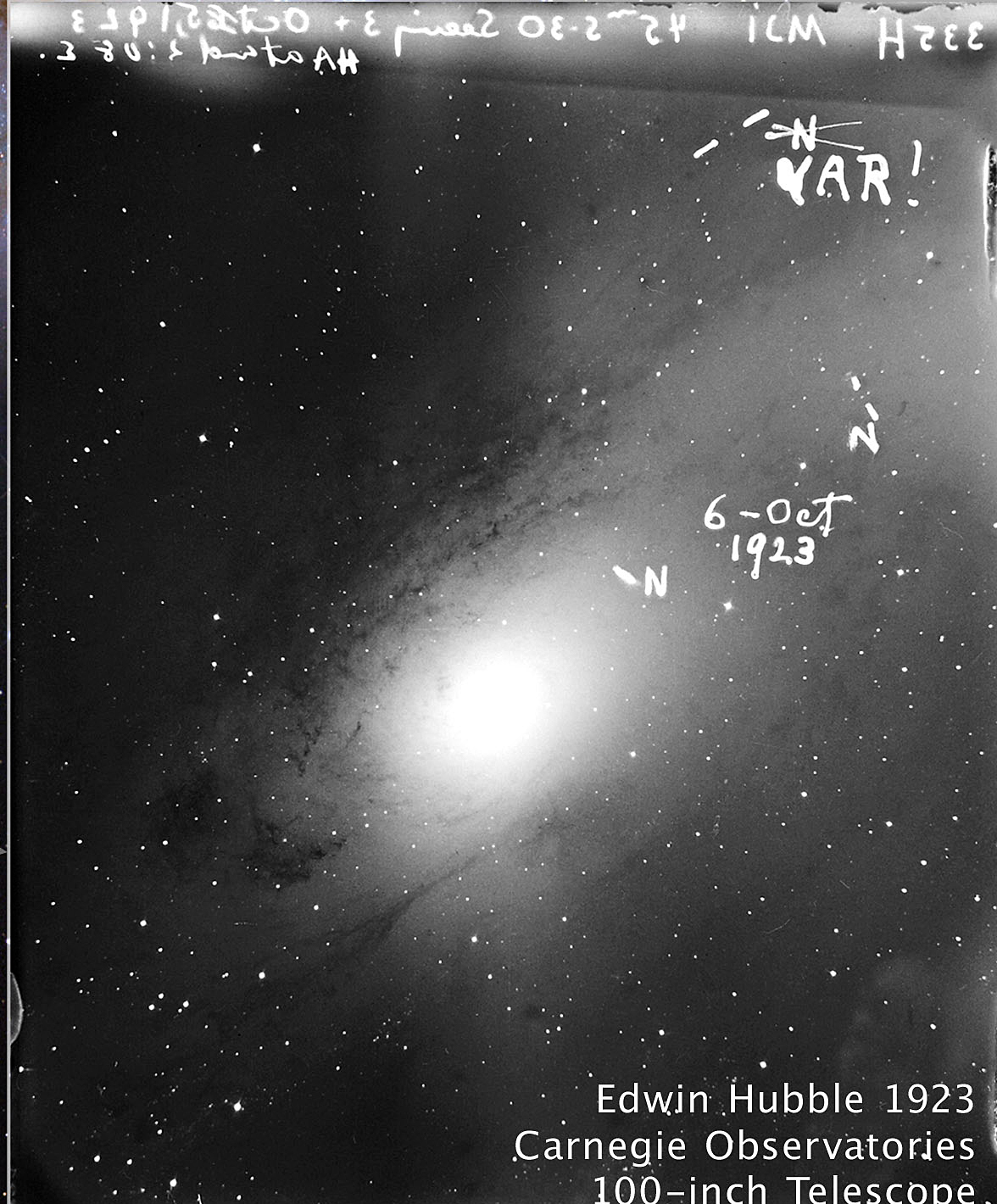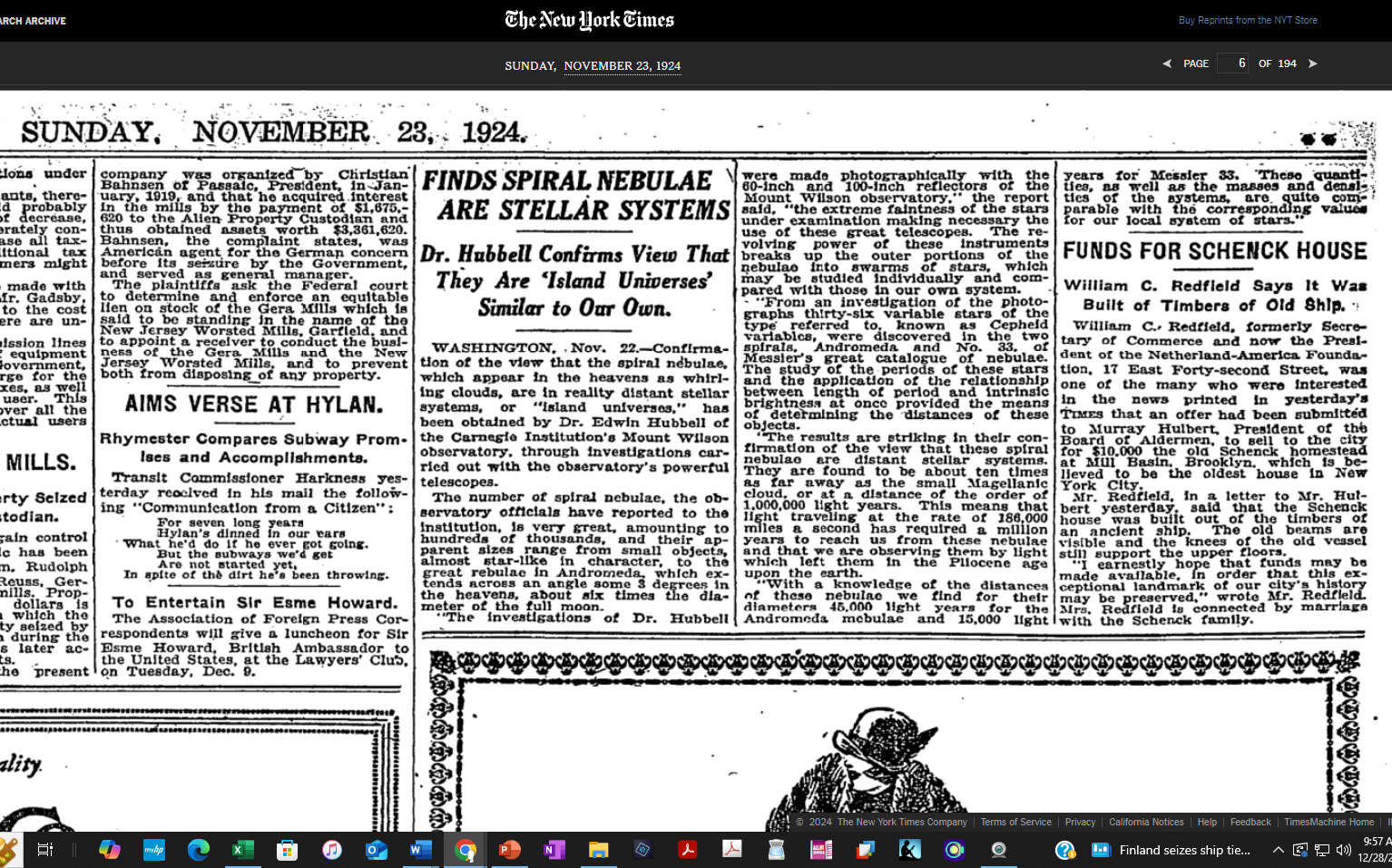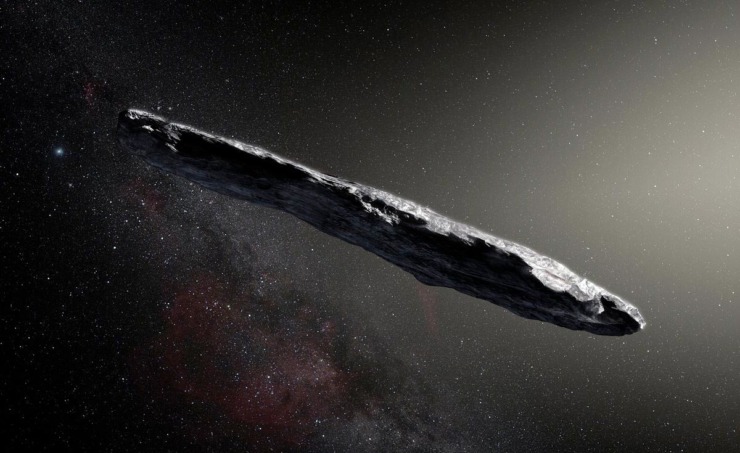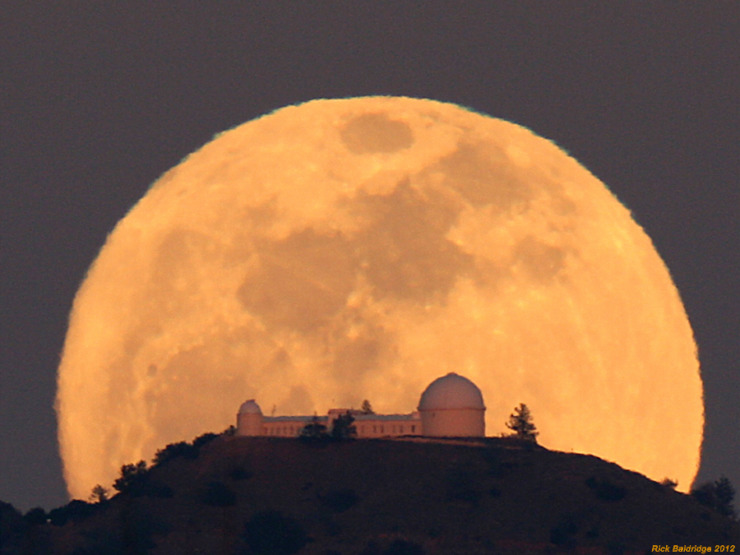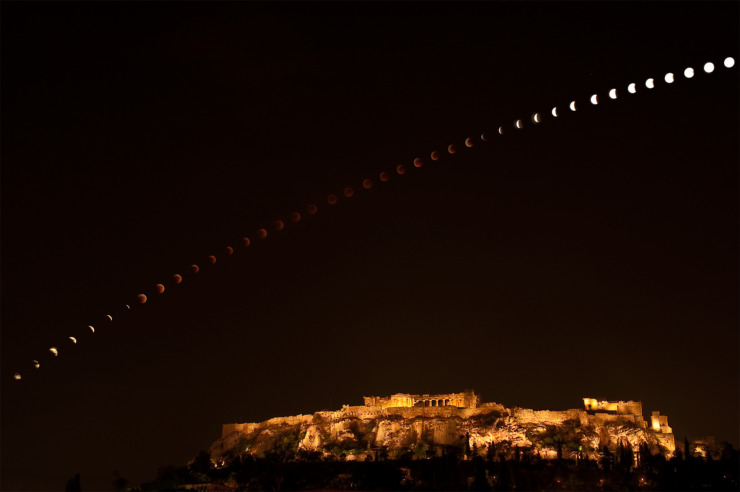On January 1, 1925, at a meeting of the American Astronomical Society in Washington, DC, astronomer Henry N. Russell read a paper contributed by a young astronomer named Edwin Hubble. In this paper, Hubble announces that he has been able, for the first time, to measure the distance to some spiral-shaped “nebulae” (nebulae were fuzzy things in the sky — their nature was an unsettled question, as was their location.)
Hubble’s conclusion from his careful measurements, using the largest telescope in the world at that time — was that some of the nebulae (notably the one in the constellation Andromeda with the catalog number M31) were so far away, they could not be part of our own Milky Way Galaxy, but had to be other galaxies — separate islands of stars. While others had suggested that there might be separate galaxies in deep space, the prevailing opinion at the time was that everything we could see in the sky was part of our giant Milky Way system.
Hubble’s measurement indicated that M31 was a million lightyears away, far too large a distance to fit within the confines of the Milky Way. Today, with better ways of measuring distance, we know that M31 is actually more than 2 million lightyears away. That means, light from it takes more than 2 million years to arrive in our eyes and telescopes. And there are billions of galaxies in all directions, some of them not millions, but billions of lightyears from us.
Here, in 1925, was the first incontrovertible proof that our Milky Way was just one among countless galaxies, and the universe was far larger than most thinkers dared to imagine. Large-scale astronomy, as we understand it today, was officially born on that January day exactly 100 years ago. It seems surprisingly recent, for so profound a realization. And you might want to add it to the things you celebrate as we begin the new year in 2025.
The details of how Hubble made the measurement require a longer discussion, but the key to his distance measurements was finding some unusual stars called Cepheid variables, whose properties turn out to make them “distance beacons.” Their changing brightness allows astronomers to read off their underlying properties, which, in turn, allows us to gauge their distance. In the second image with this post, you can see a copy of the (then) remarkable new image of M31 that Hubble took with the 100-inch mirror telescope on Mount Wilson. It was so good, he could make out a range of individual stars. He marked a particularly bright star with a handwritten N, only to realize that it was Cepheid Variable, and to cross out the N to write a triumphant “Var!” (The exclamation point is his small overt sign of the inner joy he must have felt when he discovered one of the distance beacons within his nebula.)
Historical Note: To be fully transparent, as they say in Washington (but rarely do), this was not the first public announcement of Hubble’s pioneering work. Only recently did investigators uncover that the New York Times got (or was sent) the scoop earlier. The third picture with this post shows you an article buried among others inside the Nov. 23, 1924 issue of the Times, giving the news of Hubble’s discovery. Note that the unsigned reporter spelled Hubble’s name wrong, but the story is there nonetheless.


